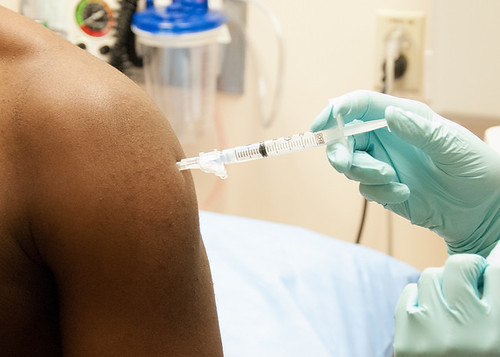Last week an official with China's Center for Disease Control and Prevention (CDC) said that the country may have a vaccine available for widespread distribution by November or December. This would almost certainly be at least a month or two before a vaccine is available for distribution in the United States, and possibly quite a bit longer.
While we may want to treat statements from Chinese government officials with some skepticism, there is reason to believe that this claim is close to the mark. China has reported giving its vaccines to more than 100,000 people. In addition to giving it to tens of thousands of people enrolled in clinical trials, it also has given them to front line workers, such as medical personal, through an emergency use authorization.
This may not have been a good policy, since these workers faced the safety risks associated with a vaccine that has only undergone limited testing, but it does mean that a large number of people have now been exposed to China's leading vaccine candidates. If there were serious side effects, it would be hard for China to bury evidence of large numbers of adverse reactions. If no such evidence surfaces, we can assume that bad reactions to the vaccines were either rare and/or not very serious.
Of course, the evidence to date tells us little about long-term effects. But that would be true even if we had a couple more months of testing. Evidence of long-term effects may not show up for years. Ideally, researchers would have enough understanding of a vaccine so that they would largely be able to rule out problems showing up years down the road, but we know they do sometimes overlook risks. In any case, the possibility of longer-term problems would still be there with a longer initial testing period.
It is possible that the vaccines are not as effective as claimed. Since China has been very successful in controlling the pandemic, even front-line workers would face a limited risk of exposure. However, they have been doing Phase 3 testing in Brazil, Bangladesh, and other countries with much more severe outbreaks.
On this issue, it is worth noting that the United Arab Emirates (UAE), one of the countries in which China is conducting its phase 3 trials, just granted an emergency use authorization for one of its vaccines to be given to frontline workers there. Presumably, this reflects the positive results of the trial, since it is unlikely that the UAE would grant this authorization simply to please China's government.
The companies have not yet shared their data, so it's possible that the evidence does not support the claim of this Chinese CDC official. But here too, the value of making an obviously false claim would be limited. If the companies either fail to produce their data or the data does not show solid evidence of a vaccine's effectiveness, the official and China's government would end up looking rather foolish.
Since they are not just trying to bluff their way through an election, but are rather concerned about China's longer-term standing to the world, it's hard to see why they would make a claim that would soon be shown to be false. In short, the promise of a vaccine being distributed in November or December is quite likely true.
I suppose this will get those hoping that the United States would win the vaccine "race" very angry. But it should get the rest of us asking why we were having a race.
Why Is Cooperative Research So Hard to Understand?
In the early days of the pandemic, there was a large degree of international cooperation, with scientists around the world quickly sharing new findings. This allowed for our understanding of the virus to advance far more rapidly than would otherwise be the case.
But we quickly shifted to a path of nationalistic competition. Donald Trump led the way down this path, with his "Operation Warp Speed." Other countries followed a similar route, even as they maintained some commitment to the World Health Organization's efforts to promote sharing with developing countries.
But the issue was not just nationalism, it is also the monopolization of research findings. If Moderna, Pfizer, or one of the other U.S. drug companies ends up developing a safe and effective vaccine, they fully intend to sell it at a considerable profit, and they will be sharing the money with their top executives and their shareholders, not the American people. This outcome makes sense if the point of the policy is to maximize drug company profits. It makes no sense if the policy goal is to produce the best health outcomes at the lowest possible cost.
The United States did not have to take the patent monopoly nationalistic route. Suppose that all the money from Operation Warp Speed went to fully open research. This would not just be an accidental outcome, it would be an explicit condition of the funding. If a drug company received money from this program, all its results must be posted on the Internet as quickly as practical, and any findings would be in the public domain.
Since we would not just want to pay for the rest of the world's research, we could have negotiated commitments from other countries to make payments that are proportionate, given their size and per capita income. Of course, there is no guarantee that they would all go along, especially with Donald Trump as president. But in principle, this would be a mutually beneficial agreement for pretty much everyone.
(Note: You can view every article as one long page if you sign up as an Advocate Member, or higher).






